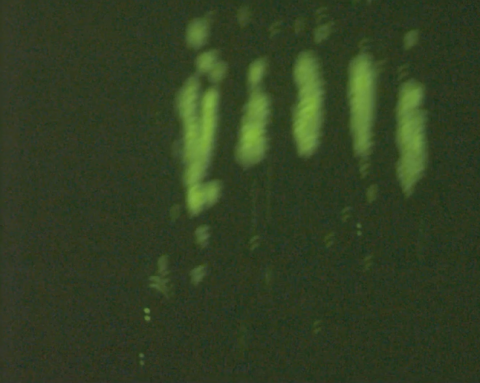With the project carried out in the "Acoustic MEMS" laboratory within Marmara University Faculty of Engineering, a microchip working with sound waves was developed to enable rapid diagnosis of many diseases, especially blood poisoning (sepsis) and cancer.
The team including scientists from Marmara University and Istanbul Gelişim University moved to the experimental stage in the "Acoustic Based Microchip to be Used in RNA Isolation" project, which they have been working on for two years. Thanks to the microchip, many diseases such as blood poisoning and cancer can be diagnosed quickly.
One of the members of the team Dr. Alper Şişman, who is a Lecturer at Marmara University Department of Electrical and Electronics Engineering, gave detailed information about the project. “The blood collection method requires plenty of devices, it should also wait at least 2 hours to get results. Thanks to this microchip that works with sound waves, we will reduce the required time to 5 minutes" he said.
Explaining the working principle of the microchip, Şişman said: “Microchip first selects the drop of blood placed on it by generating micro-vibrations, then it breaks it up. It separates and evaluates the disrupted cells and reveals the RNA molecule. Leukocytes, known as white blood cells, are our primary target. After separating this blood group, which protects the body against infections, with microchips, we evaluate the genetic information included in the cell membrane without damaging it.”
The Same Result Can Be Achieved With A Drop Of Blood
Dr. Lecturer Şişman said, “Today, 10-20 milliliters of blood must be taken from people in order for the devices to work. Taking blood samples is a troublesome process, especially for children. With the device we produced, we will be able to obtain the same result by taking 20 microliters, which means a drop of blood, from the finger. We have completed the laboratory tests, the results are very positive. Our parser and cell disrupter system works well. "
Saying that they aim to produce a working prototype within a year and a half, Alper Şişman added his words “After mass production, our priority will be to ensure the use of microchips in clinics, hospitals, and laboratories. Thanks to this device, many chemicals brought from abroad to disintegrate cells will not be needed and, thus, it will make a great contribution to our country's economy. Chemicals can damage the valuable material that comes out after cell fractionation and reduce our efficiency. Since we use sound waves with microchips, we will be able to get faster, more efficient and effective results without damaging the target molecule.”
Stating that studies in this field are continuing worldwide, Dr. Şişman explained “In some applications, microchips similar to ours are used, but there is no known microchip used worldwide in the area we target. For this reason, we take initiatives for the intellectual property rights of the device. "

